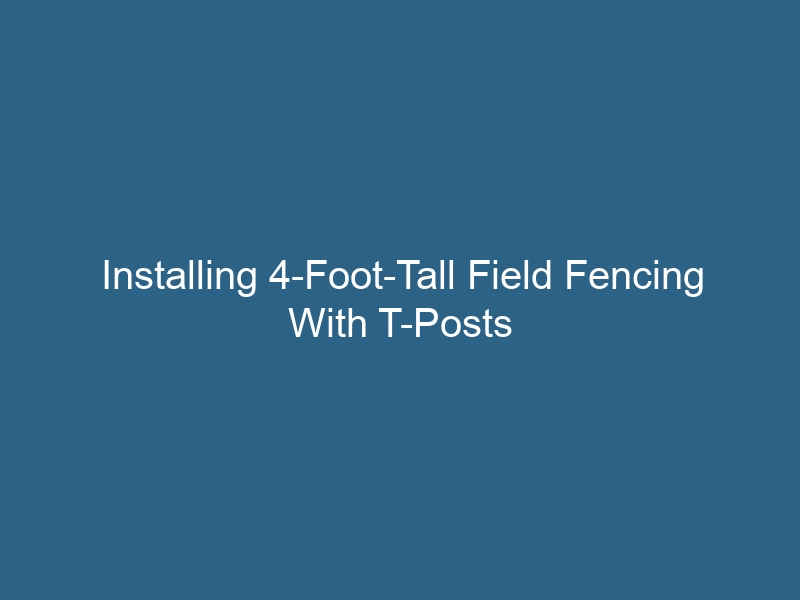Quck answer
To install 4-foot-tall field fencing with T-posts, follow these steps:
1. Measure and mark the boundary where you want to install the fencing.
2. Dig holes for the T-posts, spacing them about 8 feet apart.
3. Insert the T-posts into the holes and pack the soil tightly around them.
4. Stretch the field fencing along the boundary, starting from one end.
5. Use fence clips or wire to attach the fencing to the T-posts at regular intervals.
6. Pull the fencing tight and secure it to the end T-post.
7. Trim any excess fencing and secure the loose ends with fence clips.
8. Inspect the fencing to ensure it is secure and properly installed.
By following these steps, you can successfully install 4-foot-tall field fencing with T-posts.
Field fencing that includes T-posts offers a cost-effective, easy-to-install, and practical way to mark boundaries or keep domestic animals in and wildlife out. By using T-posts, there is no need for digging, allowing for quick placement. Proper installation techniques, such as good post-setting and securely attaching wire to the T-posts, will ensure a long-lasting fence with minimal maintenance.
What You Will Need
-
T-posts, 6 foot
-
Post driver
-
100-foot tape measure
-
String or wire
-
Fencing
-
Wire clips
-
Pliers
-
Wire cutters
How to Install 4-Foot-Tall Field Fencing with T-Posts
Step 1: Placing the First Post into the Ground
Use a post driver to pound the first post into the ground at a planned corner or where the fencing will start at an existing structure. Make sure the nobs on the posts face outward and use a level to check for plumb, adjusting as necessary.
Step 2: Measuring Between Each Post
Stretch the measuring tape to the next planned corner and pound the next corner post into the ground.
Step 3: Setting Out Posts to Pound
Place the posts on the ground, using the measuring tape as a guide. Typically, posts for woven wire or field fencing should be spaced about 10 to 14 feet apart. Adjust the spacing for greater stability if needed. Remove the measuring tape once all the posts are in place.
Step 4: Using String for a Straight Line
Stretch a string or light wire between corner posts to ensure the posts are installed in a straight line.
Step 5: Pounding Posts into the Ground
Pound all the posts for that side of the fence into the ground.
Step 6: Ensuring Proper Placement of Fencing
Unroll the fencing and place it against the outside of the fence. Make sure the fencing is oriented correctly, with larger holes at the top and tighter weaving at the bottom if there are variations in opening sizes.
Step 7: Securing Fencing to Other Posts
Attach the fencing to the first corner T-post, starting at the top. Use wire clips to wrap around the back of the T-post and squeeze the ends of the clip with pliers to secure it tightly around the fencing. Use four more clips spaced down the length of the T-post to secure the fencing to the first post.
Step 8: Using a Fence Stretcher
For best results, stretch the fencing between the corner post and the next post using a fence stretcher. Alternatively, pull the fencing taut by hand and attach it to the post using five wire clips.
Step 9: Continuing the Stretching Process
Repeat the stretching and attaching process until the entire side is completed.
Step 10: Preparing the Next Side
Lay out the next side and install subsequent sides in the same manner as the first side.
Recommendation
To enhance security, it is advisable to anchor the corner posts in concrete.


